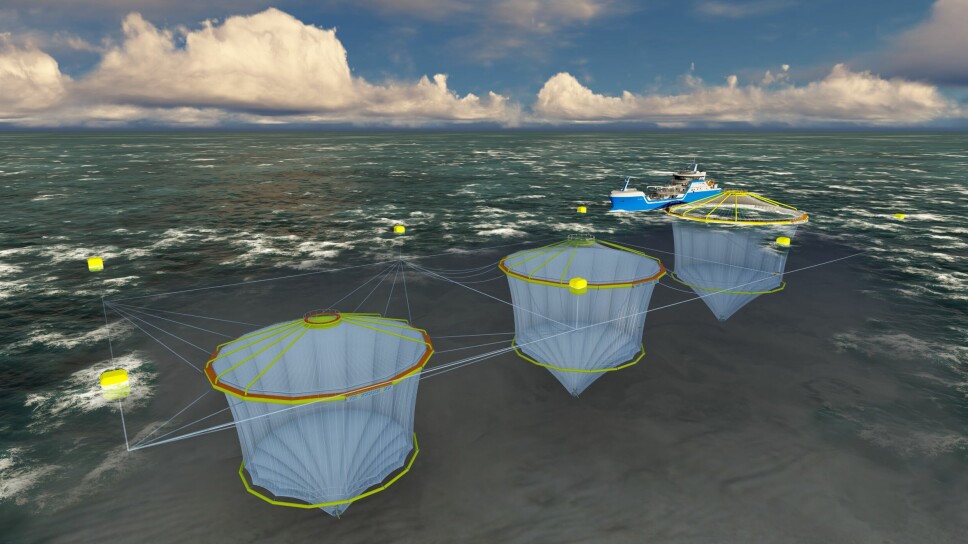
Norway salmon tax ‘will destroy progress against lice’
Farm licences will have reduced collateral value, warns ex-banker in charge of cage developer
The Norwegian government’s plan to impose a 40% “resource” tax on salmon farmers could destroy the technological progress that its system of development permits was designed to foster.
That’s the view of Martin Ramsdal, chief executive and co-founder of submersible pen developer Neskst AS.
Development permits were introduced to encourage innovators to find new ways of farming salmon that have less impact on the environment, and particularly solve or reduce the sea lice problem.
The permits give innovators rights to grow salmon, enabling them to both test their designs and offset some of the costs of development by producing salmon for market and later converting the permits to standard, highly valuable farming licences.
Less security for lenders
But Ramsdal believes the uncertainty caused by the proposed new tax means that investments worth hundreds of millions of NOK in the development of new technology to farm salmon without lice will be shelved.
“With the introduction of basic interest (resource tax), the concession (farming licence) values will become very uncertain, and the banks’ security in concessions will have a reduced value,” Ramsdal, a former team leader for aquaculture in Sparebanken Vest, said in a press release.

Firda Seafood Group and Nekst have agreed on joint investment in Solund Municipality. The company has made concrete plans to invest NOK 200-300 million in new technology development to combat lice in Norwegian farming.
Funding fear
“This is now in danger of being left without a basis for funding if the government introduces resource tax and the concession values are destroyed,” said Ramsdal.
The long-term industrial thinking is being replaced with short-term, unpredictable framework conditions, added the executive.
Solund Municipality is in an area where a 12% reduction in farmed salmon production volume has already been implemented under Norway’s “traffic light” system, which sets production limits on the basis of whether lice from farms in the area might be a threat to migrating wild salmon.
“Here, in particular, it would be very unfortunate that the development of new technology that can reduce lice numbers is affected by the resource tax,” Ramsdal concluded.
Sea Lily
Nekst has a development permit for one ocean cage. It says its HavLiljen (Sea Lily) cage design combines the best technologies from both the aquaculture industry and the subsea offshore industry. The cage is pulled down to a depth of about 20 metres by tailor-made subsea winches, where the salmon can be protected from rough seas, algae blooms or sea lice, and fish health and sustainability is secured.
The cage is equipped with double nets to avoid fish escape.
Nekst AS is jointly owned by chief technology officer Kjell Audun Aasen, and Ramsdal, along with Marine Construction owner Tore Håkon Riple and Odd Einar Sandøy, owner of wellboat company Rostein. They each own a 25% stake.






















































